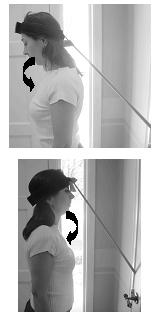The Cervical Spine: The 7 Myths, The Evidence, The Cochrane Database & Clinical Relevance
Approximately 70% of individuals are affected by neck pain at some time in their lives. In the UK, Canada and USA neck pain is usually second only to low back pain in annual workers’ compensation costs.
The purpose of this short information sheet is to share with as many Physical Therapists and Physicians a summary of the latest evidences available for this common musculoskeletal condition.
Myth #1: The course of neck pain is favorable as most patients fully recover.
On the contrary, most individuals with neck pain have many recurrences, exacerbations and do not get full resolution of their neck symptoms following whiplash injury even after a year.
Reference: Kamper SJ, et al Course and prognostic factors of whiplash: a systematic review and meta-analysis Pain. 2008 Sep 15;138(3):617-29. Epub 2008 Apr 14.
Myth #2: Nonsteroidal Anti-inflammatory drugs (NSAIDs) are the best first line of action for individuals with neck pain.
On the contrary, the Cochrane Database reports there is NO evidence that NSAIDs are effective in the treatment of neck pain.
Reference: Peloso P, et al Cervical Overview Group. Medicinal and injection therapies for mechanical neck disorders. Cochrane Database Syst Rev. 2005 Apr 18;(2):CD000319.
Myth #3: Studies support the use of electrical modalities for the management of neck pain.
The Cochrane Review Board concludes that to date they cannot make any definitive statements on electrotherapy for mechanical neck pain. The current evidence on Galvanic current (direct or pulsed), iontophoresis, TENS, EMS, PEMF and permanent magnets is either lacking, limited, or conflicting.
Reference: Kroeling P, Gross A, Houghton PE; Cervical Overview Group. Electrotherapy for neck disorders. Cochrane Database Syst Rev. 2005 Apr 18;(2):CD004251.
Myth #4: Most patients with neck pain do not require nor should be provided with manual therapy, as they will improve just the same!
On the contrary, the Cochrane Review Board concludes that there is evidence to support mobilizations / manual therapy plus exercise in the management of sub-acute/chronic neck pain with or without headache. Furthermore, cervical manipulations have not been shown to be superior to cervical mobilizations.
References: Gross AR, et al; Cervical overview group. Manipulation and mobilisation for mechanical neck disorders. Cochrane Database Syst Rev. 2004;(1):CD004249.
Hurwitz EL, et al A randomized trial of chiropractic manipulation and mobilization for patients with neck pain: clinical outcomes from the UCLA neck-pain study. Am J Public Health. 2002 Oct;92(10):1634-41.
Myth #5: Most patients with acute or chronic neck pain require general exercises for their recovery, there is no need for specific exercises provided by a Physical Therapist!
On the contrary, the Cochrane Review Board concludes that specific exercise therapy may be effective for the treatment of acute and chronic neck pain, with or without headache.
Reference: Kay TM, et al; Exercises for mechanical neck disorders. Cervical Overview Group. Cochrane Database Syst Rev. 2005 Jul 20;(3):CD004250
Myth #6: Education on home exercises is as effective as supervised Physical Therapy exercises provided by a Physical Therapist.
On the contrary, several randomized controlled trials (RCTs) provide evidence that unsupervised home programs are not as beneficial for individuals with chronic mechanical neck pain or for neck pain with radiculopathy.
Reference: Gross AR, et al Cervical Overview Group. Conservative management of mechanical neck disorders: a systematic review. J Rheumatol. 2007 May;34(5):1083-102. Epub 2007 Jan 15
Myth #7: Isometric cervical exercises are sufficient for strengthening the cervical muscles.
Following shoulder, knee or lumbar injury, would isometric exercises be sufficient for rehab? Can people really return to full function with just isometric neck exercises?
Several RCTs have demonstrated the benefits of deep cervical flexor training, progressive cervical endurance training, high-intensity neck and shoulder strengthening and stabilization exercises with an elastic band.
Reference: Ylinen J, et al Active neck muscle training in the treatment of chronic neck pain in women: a randomized controlled trial. JAMA. 2003 May 21;289(19):2509-16.
Posted on: May 07, 2009
Categories: Cervical Spine


